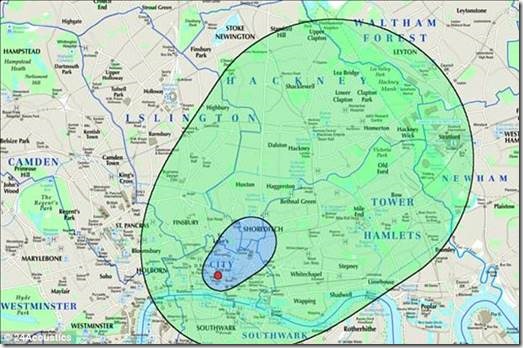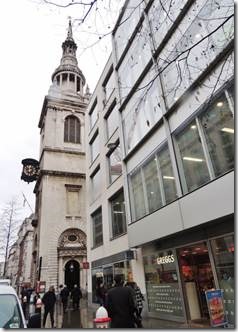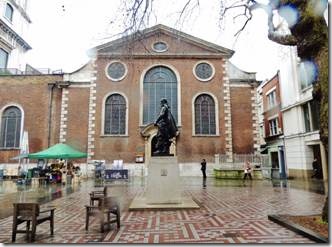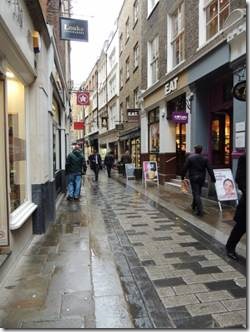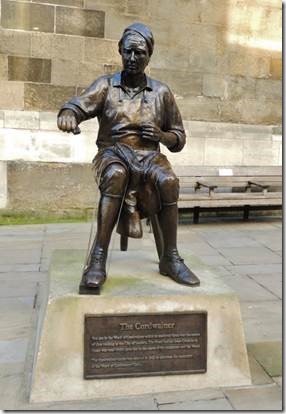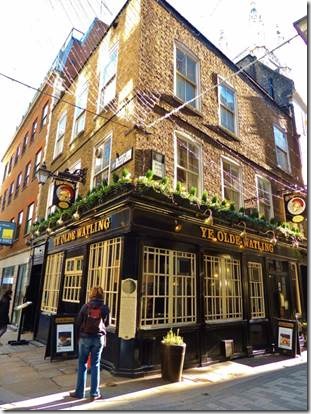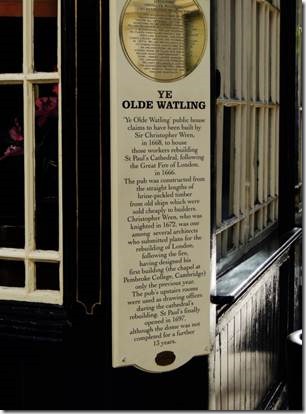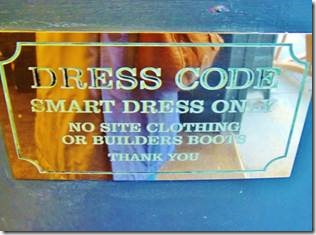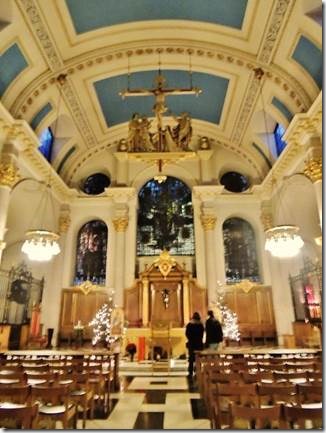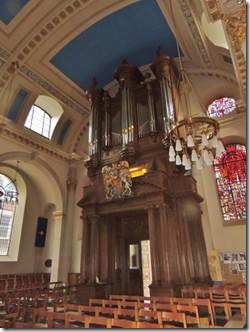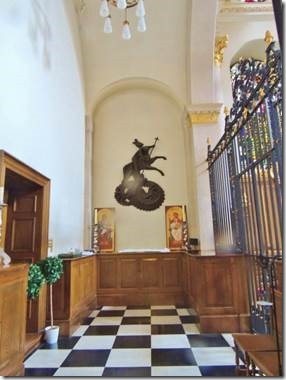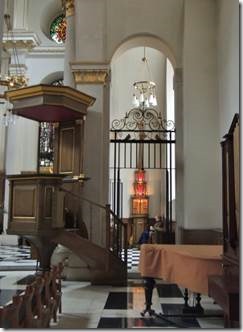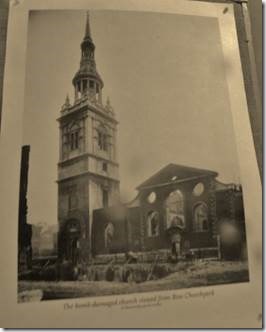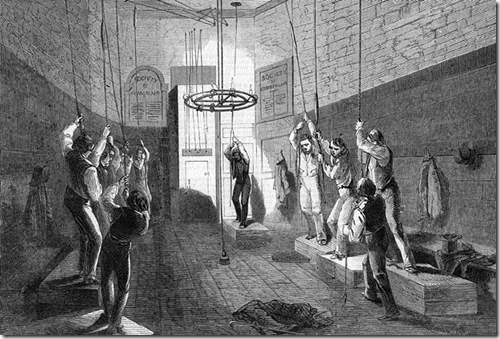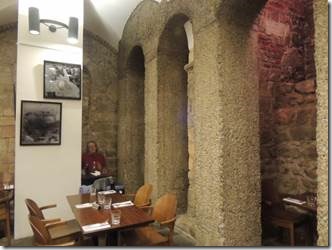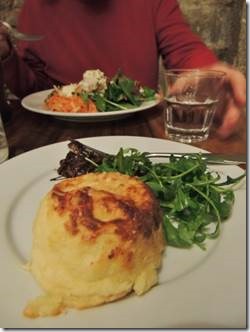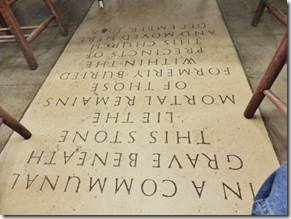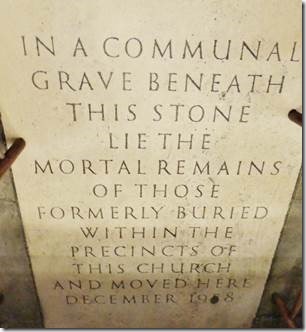Cheers,
Nothing with these emails is ever simple. Not long after we arrived in London I started writing about our walking tour of the “square mile of historic London” and got sidetracked after Part !. Same with The Blitz and Southwark Cathedral. As for the St Giles Rookery, I have not even made it to Part 1. Too many side stories with all of the Dickens connections. When I finally returned to The Blitz story, and began researching its connection to St Mary-le-Bow Church, I came across the old nursery rhyme known as Oranges and Lemons. That just sent me off in a million different directions investigating all of the churches mentioned in the rhyme and their historic references. Too much, too much, TOO MUCH!!! I am going to try to visit all of the churches in the poem; they all have a story to tell. And would be great subjects for sketching.
Anyway, here’s a bit about St Mary-le-Bow; part of the poem and, because of its bells, part of the Blitz story. And some interesting bits of history just down the lane.
Ru
London Bells Nursery Rhyme
"Gay go up and gay go down
To Ring the Bells of London Town
"Oranges and Lemons" say the Bells of St. Clements
"Bullseyes and Targets" say the Bells of St. Margaret’s
"Brickbats and Tiles" say the Bells of St. Giles
"Halfpence and Farthings" say the Bells of St. Martin’s
"Pancakes and Fritters" say the Bells of St. Peter’s
"Two Sticks and an Apple" say the Bells of Whitechapel
"Maids in white aprons" say the Bells at St. Katherine’s
"Pokers and Tongs" say the Bells of St. John’s
"Kettles and Pans" say the Bells of St. Anne’s
"Old Father Baldpate" say the slow Bells of Aldgate
"You owe me Ten Shillings" say the Bells of St. Helen’s
"When will you Pay me?" say the Bells of Old Bailey
"When I grow Rich" say the Bells of Shoreditch
"Pray when will that be?" say the Bells of Stepney
"I do not know" say the Great Bell of Bow
Gay go up and gay go down
To Ring the Bells of London Town
The Sound of Bow Bells
“St Mary-le-Bow was thrown into great prominence because it possessed the principal curfew bell, rung at 9pm each day from at least 1363 and because it was the Archbishop’s principal ‘peculiar’ (i.e. although in the middle of London it was in fact in the diocese of Canterbury and remained so until 1850) – and hence the Court of Arches. The sound of Bow bell is that which distinguishes an area in which ‘Cockneys’ are said to be born. Although the famous pre-fire tower was at the south end of the site and not on Cheapside as suggested in some illustrations, St Mary-le-Bow was with St Paul’s the backdrop for jousting and processions (every monarch or consort until James II processed along Cheapside to their coronations).” http://www.stmarylebow.co.uk/#/overview/4535876080
|
If you were born within the sound of the “bow bells” you are a “true Londoner.” Tower Bridge crosses the Thames just above the H in the word SOUTHWARK and we are just next to Tower Bridge. “Shrinking influence: A diagram shows, in green, the area where the sound of the Bow Bells reached in 1851, and in blue, the much smaller area that it reaches now. Sound of Bow Bells that define ‘true’ Londoners ‘are being drowned out by capital’s noise pollution’ Street noise now ‘twice as loud in London’ as 150 years ago” “In the 14th century the term Cockney was used by rural people to native Londoners who relied on their wits rather than their strength. By the 16th century it suggested a lack of masculinity. In time the term became synonymous with working class Londoners and it lost its negative connotations, but is occasionally still used disparagingly by those in the North to describe all Londoners. The reference to the Bow Bells appeared around 1600 in Fynes Moryson’s ‘An Itinerary’ that said: ‘Londoners, and all within the sound of Bow Bells, are in reproach called Cockneys.’ Lexicographer John Minsheu was the first to define it in this sense. In his Ductor in Linguas (1617) he wrote: ‘A Cockney or Cockny, applied only to one born within the sound of Bow bell, that is in the City of London.’ Now it seems as if the definition of “being born within the sound of the bow bells” means whether your grandparents were born within the sound of the bow bells; not just you. I see a wide variety of people who all look different from each other, but to me sound exactly the same, “born within the sound of bow bells.” We live about 1.5 miles from St Mary le Bow Church but we definitely can’t hear the bells. We can’t even hear the bells from All Hallows just next door. |
|
St. Mary-le-Bow is the church of “the bow bells.” Cheapside view and the courtyard with the statue of Virginia’s John Smith “The Church of St Mary le Bow was one of the first re-buildings erected by Sir Christopher Wren after the Great Fire of London in 1666. Its massive steeple, a square tower surmounted by four stories which reaches 235 feet into the sky, is a well-known landmark in the City, topped as it is by a weather vane in the shape of a sinuous golden dragon.” “This was the district where boot makers worked in goatskin leather. The leather was known as Cordovan and the workers as cordwainers. A statue of Captain John Smith (1580 – 1631) a cordwainer who rose to become Governor of Virginia and Admiral of New England, was therefore appropriately placed here outside the church .” http://www.britannia.com/hiddenlondon/stmlebow.html “He returned to England in October 1609 following an accidental gunpowder burn and became Virginia’s most effective propagandist and historian. He died in 1631 and was buried in St. Sepulchre’s Church in Snow Hill. The statue, by William Couper, was erected in1909.” http://www.cordwainer.co.uk/content.php?id=67 |
|
Bow Lane and the statue of the Cordwainer. “Bow Lane runs North South through the Ward.It was formerly called Cordwainer Street and Hosiar Lane. In the middle of the 16th Century it was renamed Bow Lane after the St Mary-le-Bow Church at the northern end of the lane. St Mary Aldermary dominates the southern end of the lane. In between are several fine restaurants, pubs, wine bars, shops and other retail services, together with some businesses. The Lane was pedestrianised about ten years ago and has recently been resurfaced as part of the wide ranging street scheme enhancement programme. “ http://www.cordwainer.co.uk/content.php?id=67 The Cordwainer Statue was a joint initiative by the City of London Corporation and the Ward of Cordwainer Club to mark the 100th anniversary of the Ward Club. It was funded [by]the Corporation, the Ward Club and some individual members of the Club and businesses. The bronze statue, the work of Alma Boyes, was unveiled in 2002 in a temporary location in Bow Churchyard. It was subsequently relocated to its permanent home in the newly paved area of Watling Street alongside St Mary Aldermary Church. http://www.cordwainer.co.uk/content.php?id=67 What is a Cordwainer…..? “In the Middle Ages, the tradesmen of London began to form themselves into fraternities. Workers in metal, cloth, leather and other trades formed ‘guilds’ to present a united front for their craft. Those who worked with the finest leather were called Cordwainers because their material came from Cordoba in Spain. They developed a soft, durable goatskin leather known as Cordwain – the very finest leather available – importation of which contributed to the growing prosperity of London. Over a period of time, those who processed the leather formed their own guilds. The shoemakers, however, retained the name of ‘Cordwainer’. http://www.cordwainers.org/ is the guild’s website and tells a really interesting history. It certainly totally sidetracked me from St Mary le Bow’s story! |
|
As Watling Street was mentioned as the home of the cordwainer sculpture….. we didn’t eat here because I thought their sign too snobby and ironic: the pub was built to house working men rebuilding St Paul’s Cathedral. But as one review said the food was good and there was a mix of suits and tradespeople, we might have to go one day. My guess is the workmen rebuilding St Paul’s Cathedral after the Great Fire came In wearing site clothing and builders boots. “A fascinating past Said to be built from old ships’ timbers by Sir Christopher Wren, Ye Olde Watling has a remarkable heritage dating to 1668. It stands on Watling Street, a Roman road leading out of the City via Ludgate. One claim to fame is that our upstairs rooms were used as a drawing office during the building of St Paul’s Cathedral. We also think our pub catered for Wren’s workmen after the Great Fire. “ http://www.nicholsonspubs.co.uk/yeoldewatlingwatlingstreetlondon/ |
|
“On the 20th of December 1961 the restored bells of St Mary-le-Bow rang out to mark the start of re-building: one of the bell-ringers that day was HRH Prince Philip, Duke of Edinburgh. The reconstruction effort cost £400,000 and the new church was re-consecrated by Bishop Stopford of London on the 11th of June 1964 in the presence of Her Majesty Queen Elizabeth The Queen Mother. “ http://www.stmarylebow.co.uk/#/the-new-church/4535974636 Interior of Mary-le-Bow rebuilt after the blitz. “A number of chandeliers provide internal lighting but perhaps the most imposing internal feature is the vast gilt rood figure of the Crucifixion which is suspended above the nave. The rood was made by Otto Irsara of Oberamagau and was a gift from the German people to St Mary’s in 1964…… The organ was moved and rebuilt by Rushworth and Dreaper from the north-east corner to its present position over the western doorway in 1964. This inadequate instrument was replaced in 2010 by Kenneth Tickell & Company. “ http://www.stmarylebow.co.uk/#/the-new-church/4535974636 |
|
“The north east chapel, perhaps intended by King to be a Lady Chapel now houses a bronze relief of St Michael and the Dragon by Ragnild Butenshon, placed in memory of Norwegians who died in the resistance to the Nazi occupation from 1940-45. The sculpture was given by the people of Norway (and unveiled by King Olav V in 1966) for whom the sound of Bow Bells, broadcast throughout Europe was a symbol of hope during the occupation.” http://www.stmarylebow.co.uk/#/the-new-church/4535974636 The BBC used a 1926 recording of St Mary le Bow’s bells for their radio broadcasts after the church was bombed.
“Founded in or around 1080 as the London headquarters of the archbishops of Canterbury, the medieval church of St Mary-le-Bow survived three devastating collapses before being completely destroyed in the Great Fire of 1666. Rebuilt by Sir Christopher Wren, it was destroyed once more in 1941 but was again rebuilt and re-consecrated in 1964.” http://www.stmarylebow.co.uk/#/history/4535373215 “Hanging Rood designed by John Hayward, carved by Otto Irsara of Oberammergau , a prisoner of war, and painted by Siegfried Pietzsch. “ This is according to Churches, Cathedrals and Chapels By John Wittich which came up on Google books but I can’t find elsewhere. The St Mary le Bow site confirms that Irsara did create the rood. The rood was made by Otto Irsara of Oberamagau and was a gift from the German people to St Mary’s in 1964. http://www.stmarylebow.co.uk/#/the-new-church/4535974636 “In 1392 Dick Whittington heard Bow bells call him back to London to become Lord Mayor; to be born within the sound of Bow bells was the sign of a true Londoner or Cockney; and Bow bell’s authority ends the medieval nursery rhyme Oranges and Lemons – ‘I do not know says the Great Bell of Bow’. During the Second World War the BBC’s World Service broadcast a recording of Bow bells, made in 1926, as a symbol of hope to the free people of Europe. This recording is still used by the BBC as an interval signal. Today Bow bells ring out proclaiming the presence of a church which has been at the centre of London life since Llanfranc refounded St Mary le Bow in 1088.” http://london.lovesguide.com/articles/st_mary_le_bow.htm tells about the bells of St Mary le Bow |
|
Bomb damage to St Mary le Bow and to the entire area just east of St Paul’s Cathedral |
|
“Bomb Damage from St. Paul’s Cathedral looking East. This photo was taken from the Golden Gallery of St Paul’s Cathedral in the aftermath of the Blitz. The view to the east includes Queen Victoria Street, Cannon Street railway station, Friday Street and Bread Street. The two churches featured were both heavily damaged in the attacks. Only the tower remained of St Augustine’s Church on Watling Street. The bells of St Mary-le-Bow on Cheapside had crashed to the ground. Police Constables Arthur Cross and Fred Tibbs photographed the scene that surrounded St Paul’s. Almost alone, the cathedral remained intact.” http://www..museumoflondonprints.com/image/139305/arthur-cross-fred-tibbs-bomb-damage-from-st-pauls-cathedral-looking-east-1941 |
|
The Bow-Bell Peal on Christmas Eve This article is reproduced from the Illustrated London News, Dec 21, 1850 from the copy in the ASCY archives. http://london.lovesguide.com/articles/bow_bells.htm |
|
We had a lovely lunch in the church crypt! My goat cheese souffle was wonderful. |
|
Set in the floor in the center of the main dining area was this stone memorial. That date is 1958! “….the crypt of St Mary le Bow whose history stretches back almost to the Norman Conquest. Built in around 1080 by William the Conqueror’s Archbishop of Canterbury, Lanfranc, the crypt’s architectural design incorporated arches. These were apparently the first such in London and gave rise to the Church’s name – “le Bow”. The street level was also lower than it is today so the upper part of the crypt was above ground level. Its walls still display evidence of the windows built to let in the light. For the majority of its life the crypt was let out as storage space to local people. It was only after the Great Fire in 1666 – which it survived – that it began to be used for burials. Incorporated into Wren’s church of the 1670s, it once again survived both the devastation brought by the bombing of World War II and the rebuilding of the church at the end of hostilities.” http://ancestreemakers.wordpress.com/ The crypt which sat (and still sits today) beneath the 11th-century church was the first arched crypt found in any church in London. The ‘le-Bow’ in the church’s name derives from those arches, and the Latin name Sancta Maria-de-Arcubus bears further witness to the importance of the arched crypt. The c.1080 building was apparently one of the earliest stone churches in London, and the second tower of that church (completed in 1512) was crowned by five lanterns, four at the corners of the tower and the fifth held aloft on flying buttresses. In the 11th century St Mary-le-Bow was known as St Mary Newchurch to distinguish it from its near neighbour St Mary Aldermary (Older Mary) which is located at the end of Bow Lane, about two hundred yards to the south of St Mary-le-Bow. The City of London in those days was London; a densely populated square mile in which tens of thousands of people lived in close proximity and in a large number of tiny wards and parishes, each having its own parish church. The emerging suburb of Westminster was a long walk from London, through fields and pastureland, with villages like Holborn as stopping points along the way.” http://www.stmarylebow.co.uk/#/the-crypt/4535876531
And then, because you never know where research will lead…. And I must go look for a bottle….. “Bruce Jack’s desire to ‘do things a bit differently’ has proven to be a big success, the latest introduction into the UK is Mary le Bow. Mary le Bow is a farm-designate red blend consisting of Cabernet, Shiraz, Petit Verdot or Merlot and sometimes (in exceptional years) Cabernet Franc – all in varying proportions, depending on the vintage characteristics of the year. This wine comes from the spectacular, top-quality wine farm called Wildepaardekloof ("wild horse valley"), tucked into the mountains high above the rural hamlet of Ashton in the Robertson wine ward. The aspect is South West and East facing. The soils are mostly devigorating, mineral-rich, ancient, decomposed granite. Bruce has been involved with the farm since the re-planting program was undertaken by the Fraters in the 1990’s. The wine has been made since 2003. The Mary Le Bow Brand is owned by a Trust, the beneficiaries of which are the Frater and Jack children. The late James Frater and Bruce were close friends. The origin of the name – Mary le Bow is named after St Mary le Bow in Cheapside, London. Famous of course for the big Bow Bell. If you are born within earshot of the Bow Bell you are a true Londoner – a Cockney. Many sources put Mary le Bow as the oldest place of Christian worship in England. Much of this part of inner London was a fairly unstable marshland but, unusually, this church is built on granite, and the various levels of crypt are cut down into this granite. Many of the Crusades officially left from St Mary le Bow, and of course the remains of the knights who fought and died in the Holy Land were interned in the crypts. Angela Frater’s (James’s mother) distant ancestors were some of the last people to be buried there, hence the connection. “ |
|
St Mary Le Bow |

